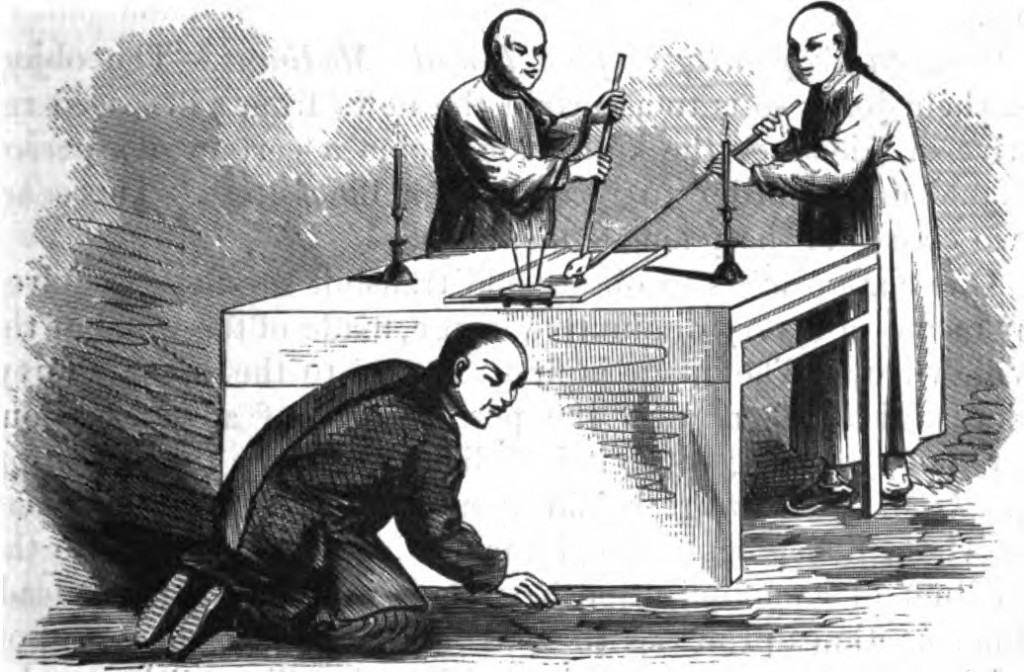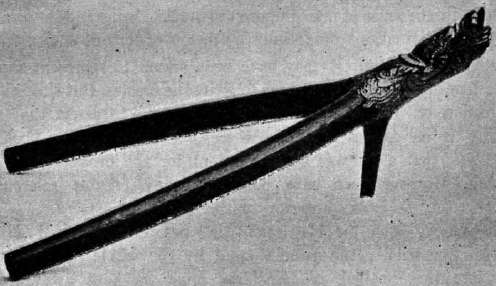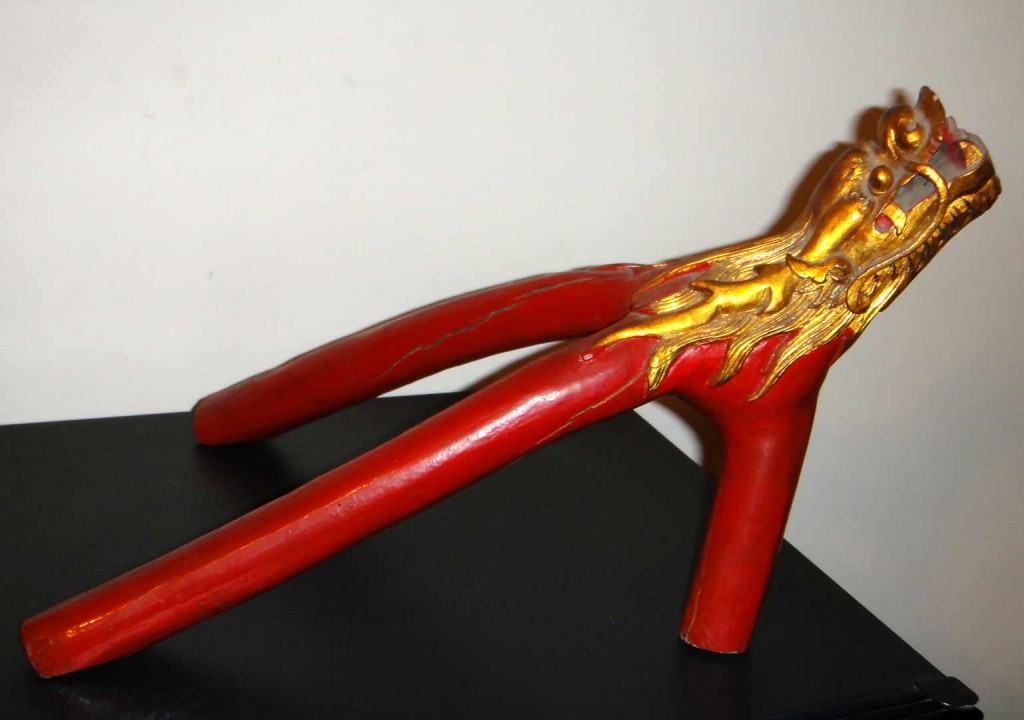The first thing I want to say is that this article is in no way intended to start a debate about the effectiveness or evilness of a spirit board or spirit writing or spirit communication in any form. The purpose of the article is to educate you on the fact that spirit writing was around LONG before the Victorians decided to patent it and make it a parlor game. If you get yourself into any of the millions of discussions worldwide on “what do you think of Ouija boards” whether it be in person or on the internet you realize really quickly what a can of worms has been opened… or is it a can of demons?
Different cultures have had their own version of this, it’s gone by different names and a few different beliefs are behind it. The bottom line is still the same: someone using an implement of communication whether it is a Ki, dragon’s bones or a planchette, is getting notes “from the other side”. Dragon’s Bones date back to around 1250 BCE, Ki dates back to around 618 AD and the planchette to around 1890. So as you can see, other cultures were way ahead of the game.
I have seen it said by Ouija historians that they don’t know where the origin of the Ouija board came from. Really? It doesn’t really take that much digging by someone that knows how to do research to figure it out. There is a book that details the religious systems of china that pretty much tells you exactly where it came from.
The Chinese conversed with gods and spirits, practiced exorcisms (I think one of my favorite descriptions is the exorcism of oyster ghosts), made charms and amulets, and believed greatly in the gift of mediumship, as did other cultures.
Think about that for a minute.
Spiritualism is not something invented in America in the 1840s by the Fox sisters. It is not something based in television and movie entertainment. It was something revered by the ancients. Even the bible says it exists.
During the T’ang Dynasty (618 – 907 AD) mediums would use an something called a ki pit or divining pencil and there were very explicit directions on how to obtain this magical instrument.
First and foremost it had to be made of peachwood as it was believed all specters feared this. If peachwood could not be found, it was acceptable to use willow. You had to cut a natural fork from the southeastern side of the tree because it had been constantly exposed to the sun and because it was imbued with the light of nature it was the source of universal divine intelligence. Once an 18 inch branch had been obtained, it was painted red as extra insurance against evil specters.
The shape looks familiar doesn’t it?
The short projection is the part that was used to write the divine messages in sand or incense ashes that were either poured on a table or a divining platter. This picture is a modern day reproduction
A medium would hold one arm of the fork with his right hand while another member of the divination club, an auxiliary diviner, would hold the other fork with his left hand. This person had to be neutral and not interfere with the movement of the medium.
There were fashionable clubs dedicated to this, where the gods had alters with sacrificial food dedicated to them. The Ki might also be decorated in such a way to be pleasing to the god. The medium and the secondary, holding the Ki invited or invoked the spirit to grace them with their presence and the communication session would begin if the god was in the mood to play along.
Like a hammer, it jumps up and down, scrawling the message. Normally, the first thing said was an introduction and greeting from the god. When they have the name, the spirit is politely asked by the medium if it will now give a message which is answered in another round of hammering writing. There is a reader that dictates what is written to a scribe for the official record. This is a difficult job especially when the spirit decides to be prankish and guide the medium to write upside down or mix up the words of the phrase. This video shows you an example of what it was like to watch
The medium will pose the questions for the day and the spirit will answer and sometimes give their opinion of the person to whom the question pertains, praising or condemning the man’s spirituality or quantity of sacrifices and good works.
For the same unknown reason it is said to happen in modern times, sometimes it goes all wrong and an undesired spirit shows up and takes possession of the Ki with the intent of causing evil. It is said these episodes did not last long as the god the intended communication was for, shows up and lays the smackdown on the evil specter. Sometimes an unintended god will show up and butt in with his own advice.
Many a person’s fate and even his health was decided by this form of spirit writing because it was taken so seriously. Can you imagine these ancient men in today’s world seeing what their revered form of divination has been turned into?






This reminds me a lot of what my dad did, and now I do. He used a peach limb, that was forked, and divined for water. Then he realized he could use a plumb bob, tied to a string, and map douse.
My mother gave me Daddy’s plumb bob, after he died. I read up on dousing, and discovered I could find water and unmarked graves, with two bent coat hangers. Then, practiced and discovered that I have the ability to talk to spirits, through the pendulum/plumb bob. I also have an agate pendant that was a rough rock, I found in my Daddy’s things. I can use it to douse, but sometimes the power is so overwhelming, it makes me violently ill.